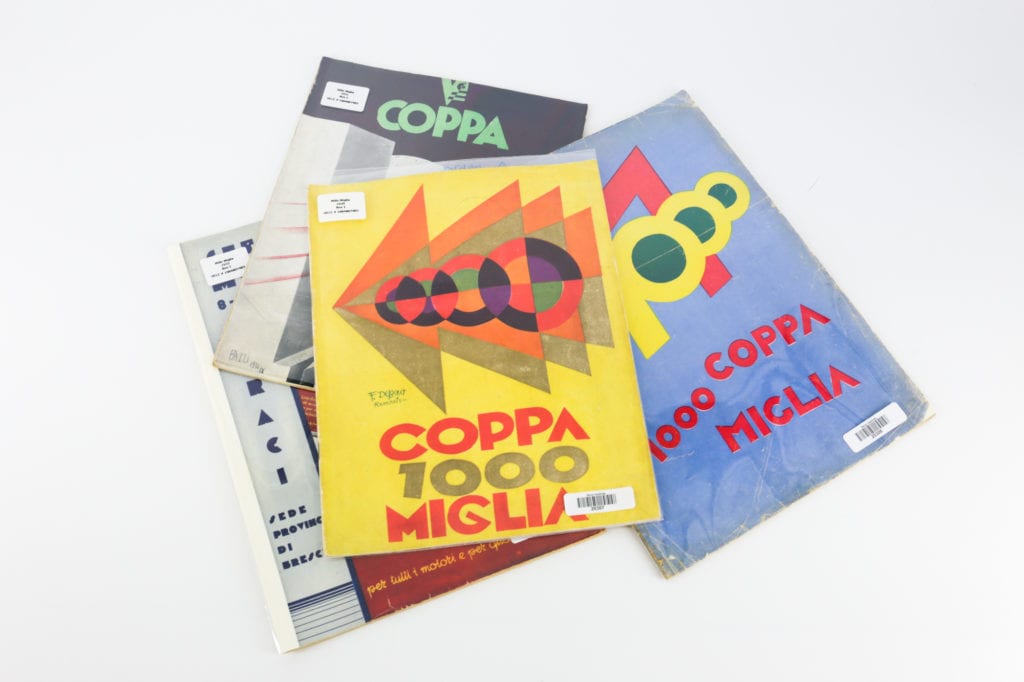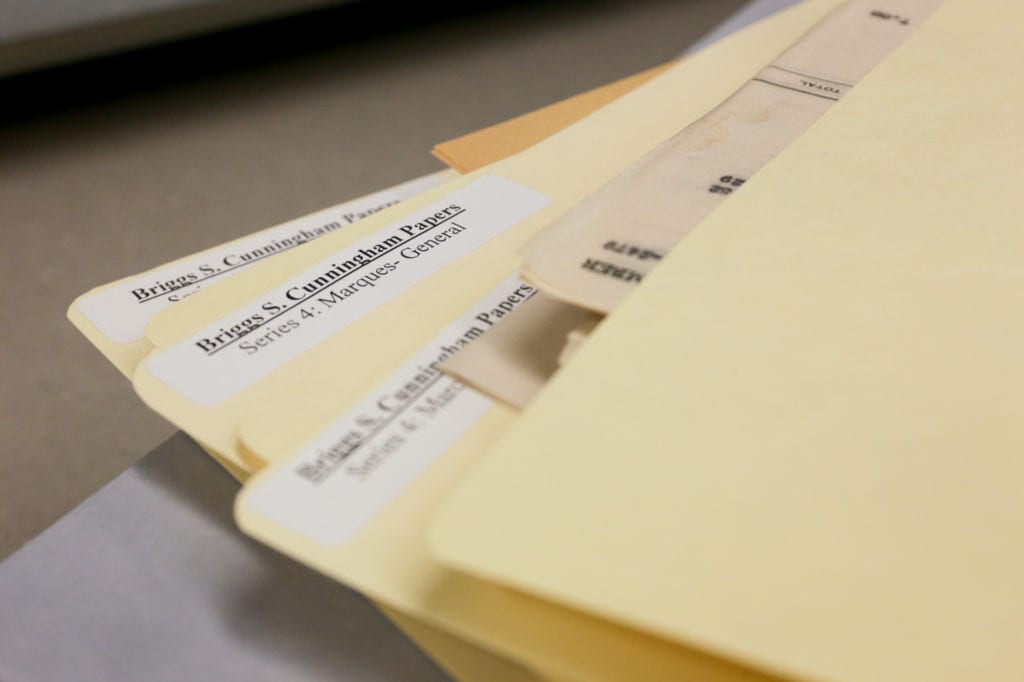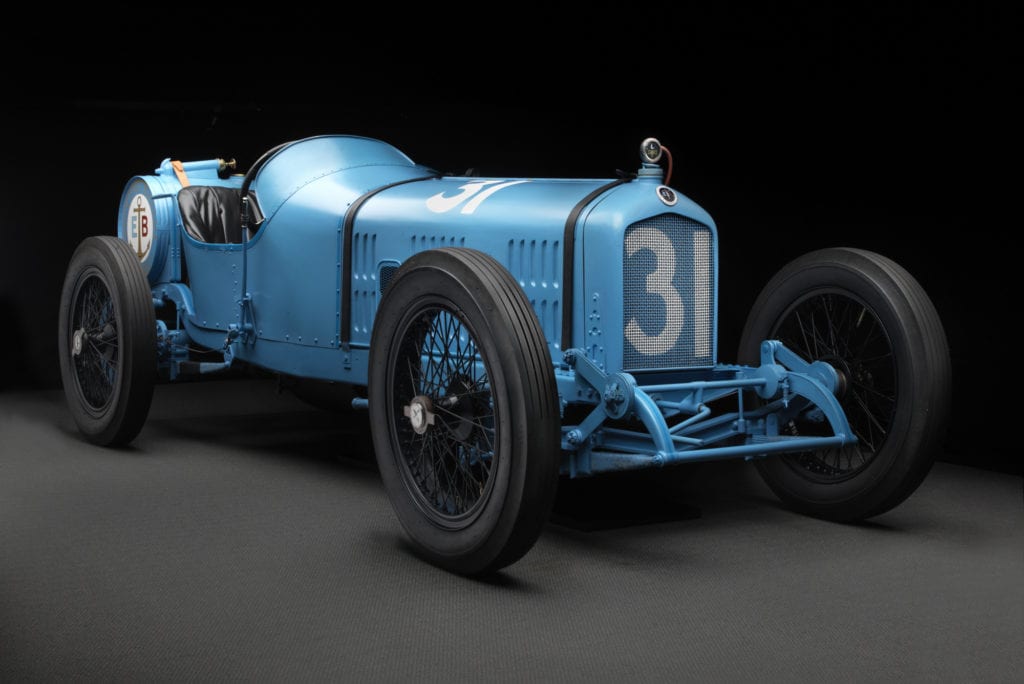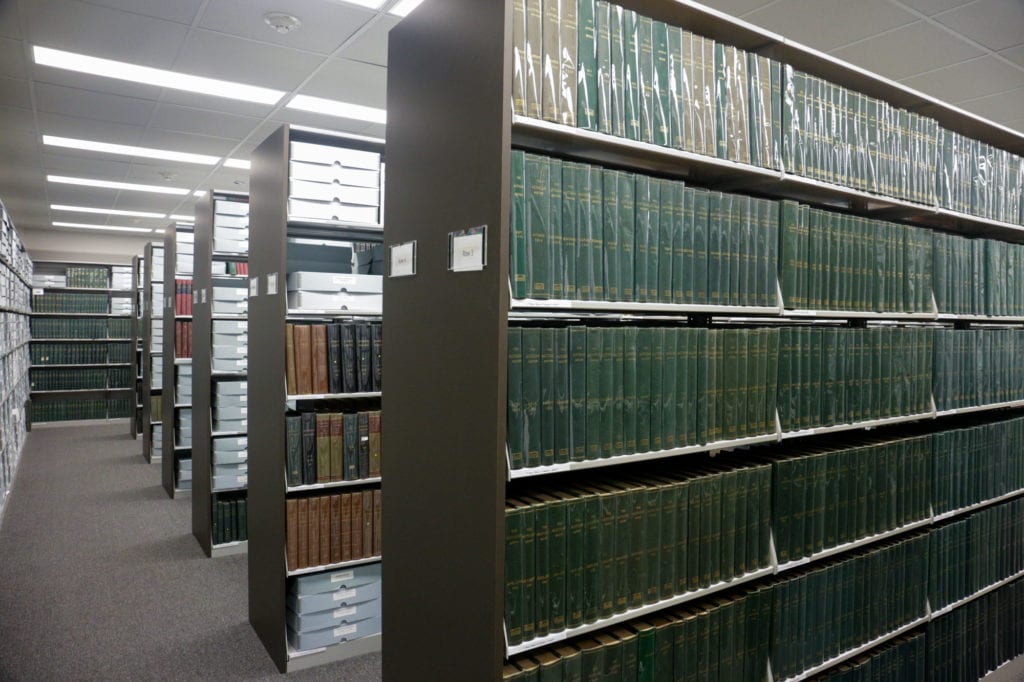More Than Just Books: Revs Institute Library & Archives

Libraries and archives share a collective responsibility to preserve information and provide access to that information, and the Revs Library is no exception. The library currently holds over 2,000,000 automotive-themed items, which are all carefully cataloged and made available to researchers. Making up that number is more than just books. The library houses journals, photographs, film reels, trophies, posters, papers, company records, artifacts, and much more. Any one of these items can serve as a vital piece of information to the right person and each piece tells its own story.
Dr. Paul Baxa, a professor at Ave Maria University, located in Southwest Florida, is one of the many researchers that frequent the Library. He has previously written academic papers and presented at the Watkins Glen Symposium on the famous Mille Miglia road races. He came to Revs to further investigate the history of these races and study the relationship between motorsports and fascism, through the lens of the Mille Miglia. For this task, Dr. Baxa requested numerous Italian magazines from 1927 to 1957, the period in which the race was run. Mille Miglia yearbooks were also pulled from the stacks to aid in the professor’s search.

Dr. Baxa scoured Revs’ online catalog prior to his visit, which gives the Library staff plenty of time to have materials ready beforehand. This catalog keeps track of all the Library’s holdings and is user friendly for both patron and staff so that an item can be pulled in less than five minutes. The keyword searchability of the catalog allows users to narrow down queries and determine what the Library has on a subject and what type of material it is. Of his research appointments Dr. Baxa commented, “Motorsports as part of history is underdeveloped in academia” and in turn that, “Revs is a goldmine for academics.”
Aside from academia, there are other ways the library holdings are useful for researchers. Jonathan Sierakowski, of Sierakowski Classic Car Advisors, conducts research at Revs for a very different reason. Jonathan searches for specific information that relates to a single car’s history in order to determine the provenance of the car. The materials typically required for this type of research are photographs and original source documents, both materials that Revs Library holds.

“Revs should be the first stop” explains Sierakowski on conducting his provenance research. By nature, searching for a car’s provenance can be difficult as it requires careful examination of photographs and a reliance on original source documents. The tangled web of a car’s history can often lead to dead ends or contain sizeable gaps in its timeline. Revs Digital Library, comprised of over 500,000 photographs, is a great place to start and allows researchers to browse the entire collection online.
Deconstructing a car’s history through photographs is a skill requiring expert examination of details down to the placement of a single nut or bolt. However, these details can shed light on a car’s true identity and prove or disprove whether a car is a race winner or a DNF. Something that occurs more often than one might expect

One such car whose identity was revealed through newly discovered photographs was our very own 1919 Ballot L5/8. It was originally believed that this car was the number 33 car driven by Paul Bablot at the 1919 Indianapolis 500. With the newly discovered information and photographic evidence, it became clear that this car was not the 33, but in fact the pole-setting number 31, driven by Rene Thomas. During the restoration of the car, the Revs Library played an important role in providing key information to the restorers.
Countless photographs were pulled to compare the original parts with the restored pieces as well as books, journals, and periodicals. Anything with information related to the 1919 race, the Ballot company, or similar cars were used to guide the restoration. All this information was located a short walk from the shop bay where the car was held to the Library. Of course, there were many other people who helped make this restoration possible including Eddie Berrisford, Mike Riley, Gundula Tutt, and Dave Copeland, among others.

In addition to the content from Revs Library that helped us restore the Ballot, we also acquired photos and information from other members of the classic car community. This type of collaboration is why we strive to make our content as accessible as possible. Revs Library is a resource to the automotive world and is available to anyone who wants to use it. The library collections are not just a vast culmination of books that sit on shelves, they serve as an information gateway for those writing books, researching provenance, restoring classic cars, or simply wanting to learn more about the history of the automobile.

